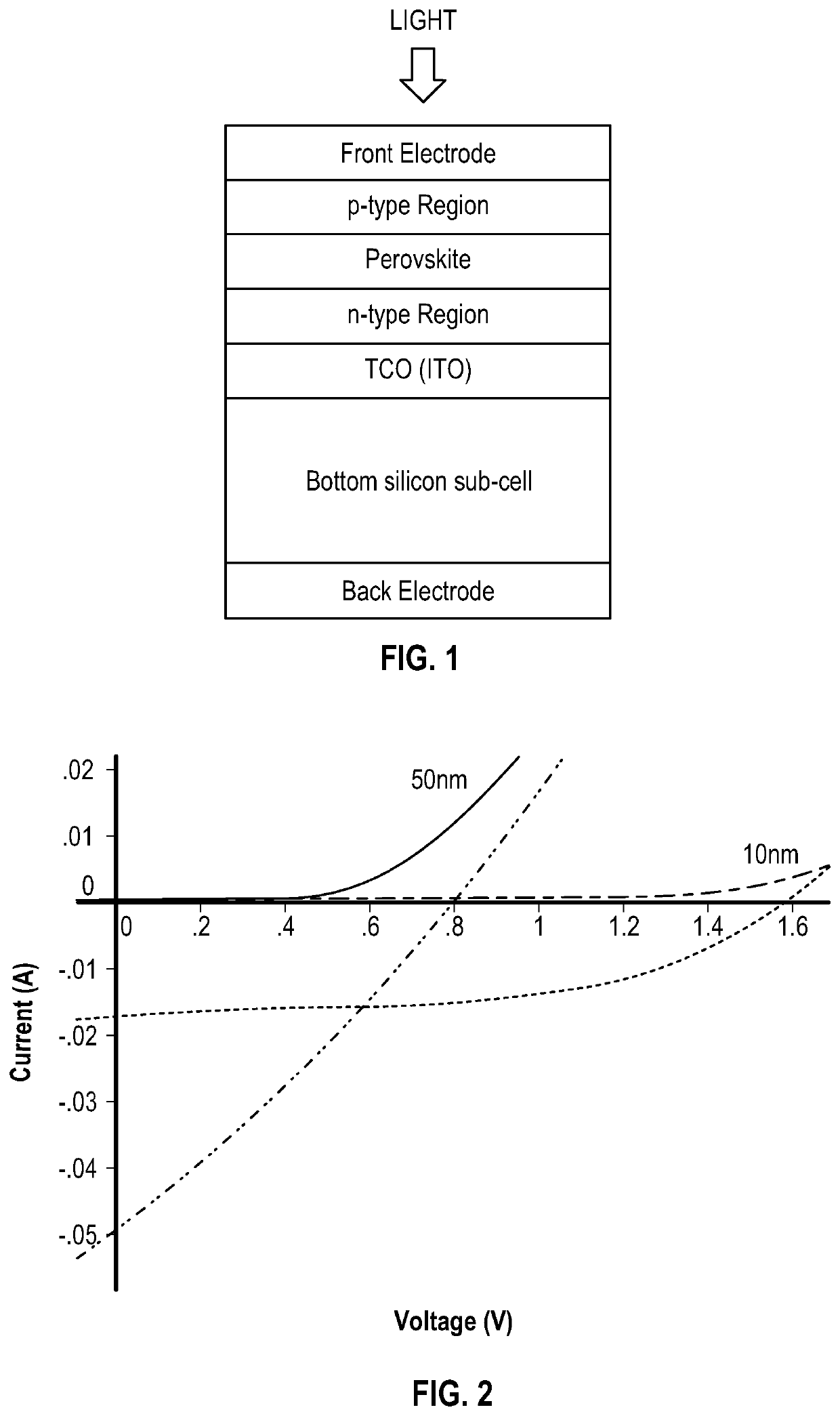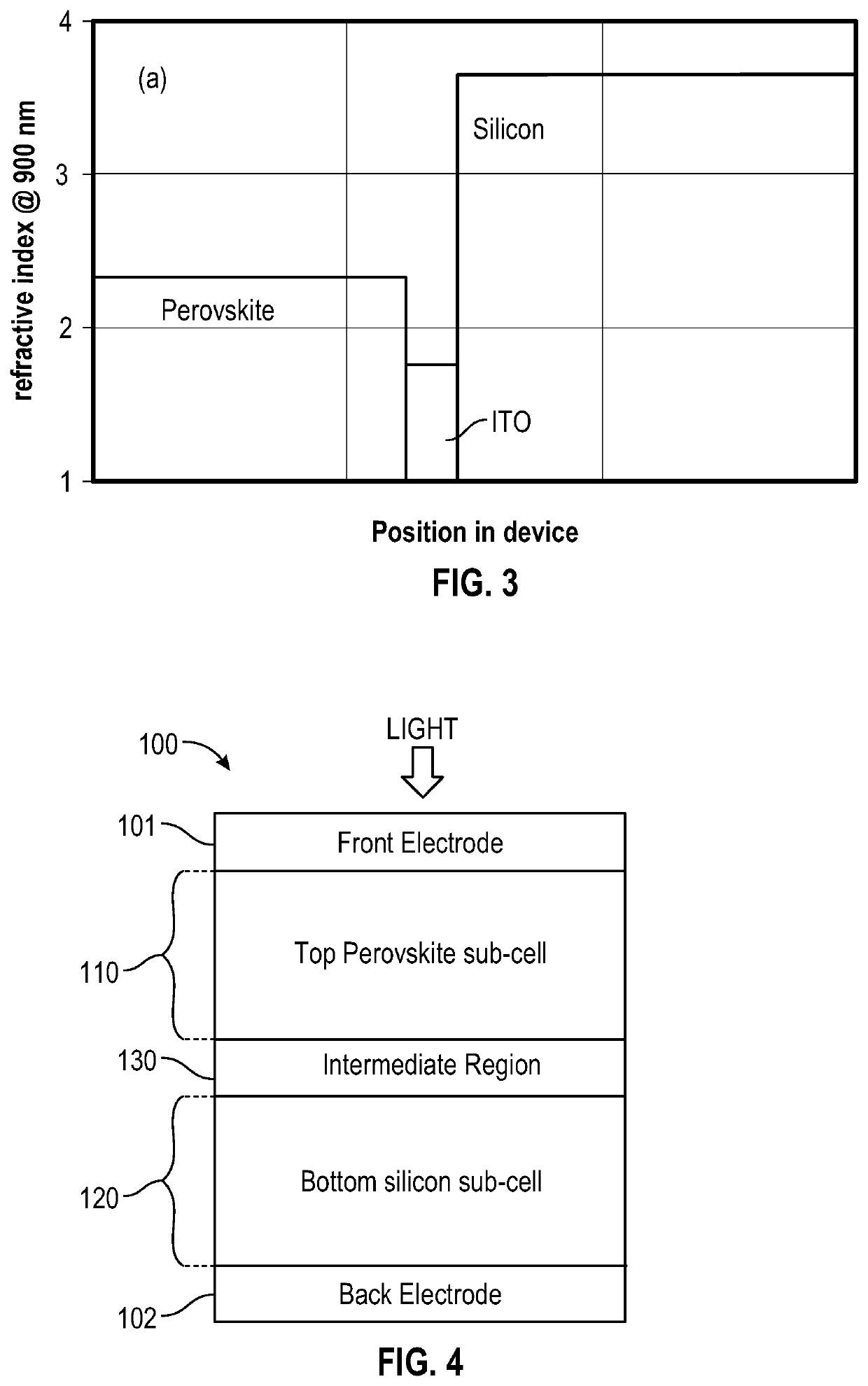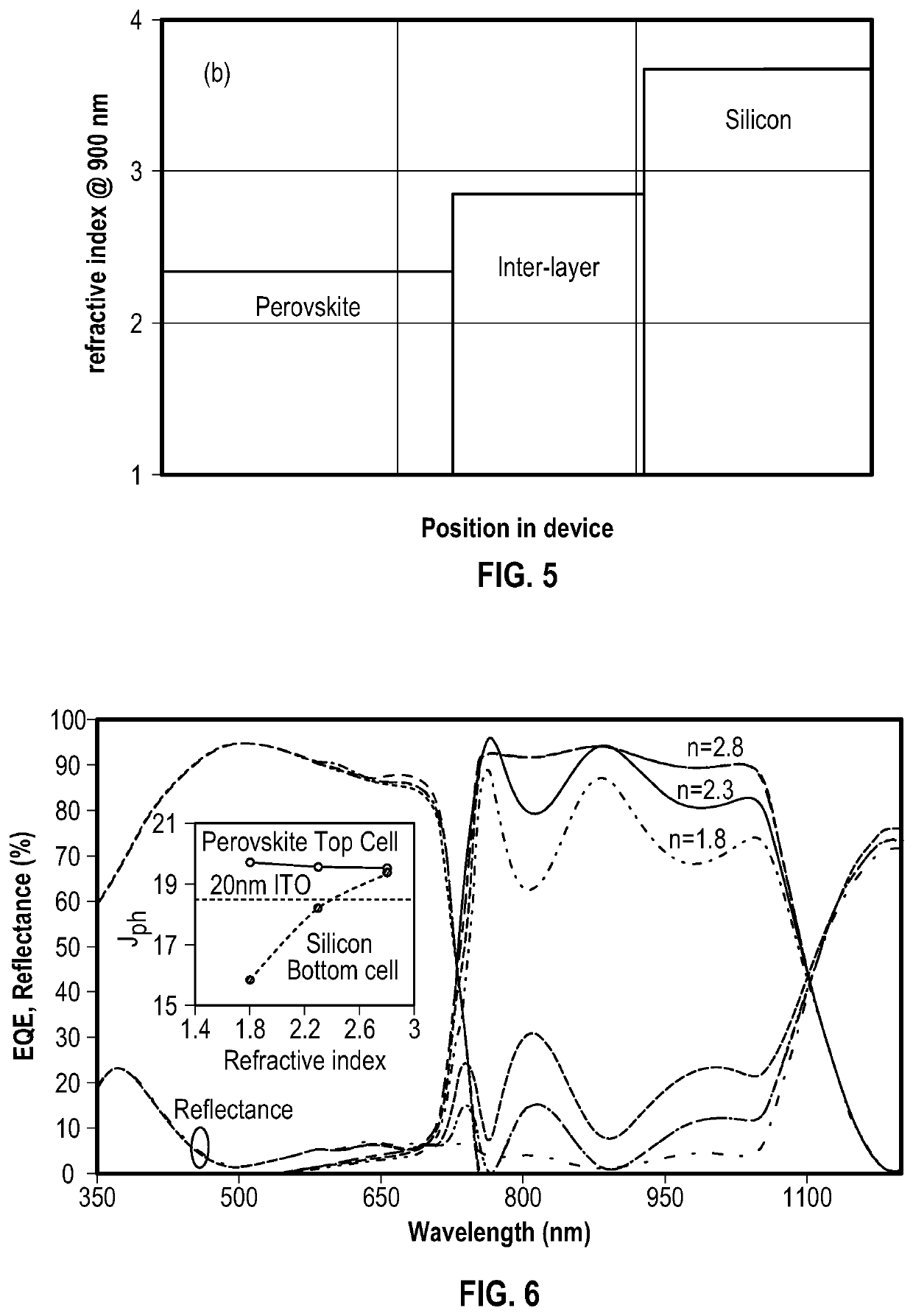Multijunction photovoltaic device
a photovoltaic device and multi-junction technology, applied in the direction of photovoltaic energy generation, semiconductor devices, electrical equipment, etc., can solve the problems of high material cost, high manufacturing cost of solar energy capture devices, and historically impeded its widespread use, so as to achieve sufficient transversal conductivity and reduce reflection losses
- Summary
- Abstract
- Description
- Claims
- Application Information
AI Technical Summary
Benefits of technology
Problems solved by technology
Method used
Image
Examples
Embodiment Construction
Definitions
[0049]The term “matrix”, as used herein, refers to a fine-grained material in which larger objects are embedded.
[0050]The term “photoactive”, as used herein, refers to a region, layer or material that is capable of responding to light photoelectrically. A photoactive region, layer or material is therefore capable of absorbing the energy carried by photons in light that then results in the generation of electricity (e.g. by generating either electron-hole pairs or excitons).
[0051]The term “perovskite”, as used herein, refers to a material with a three-dimensional crystal structure related to that of CaTiO3 or a material comprising a layer of material, which layer has a structure related to that of CaTiO3. The structure of CaTiO3 can be represented by the formula ABX3, wherein A and B are cations of different sizes and X is an anion. In the unit cell, the A cations are at (0,0,0), the B cations are at (½, ½, ½) and the X anions are at (½, ½, 0). The A cation is usually larg...
PUM
 Login to View More
Login to View More Abstract
Description
Claims
Application Information
 Login to View More
Login to View More - R&D
- Intellectual Property
- Life Sciences
- Materials
- Tech Scout
- Unparalleled Data Quality
- Higher Quality Content
- 60% Fewer Hallucinations
Browse by: Latest US Patents, China's latest patents, Technical Efficacy Thesaurus, Application Domain, Technology Topic, Popular Technical Reports.
© 2025 PatSnap. All rights reserved.Legal|Privacy policy|Modern Slavery Act Transparency Statement|Sitemap|About US| Contact US: help@patsnap.com



